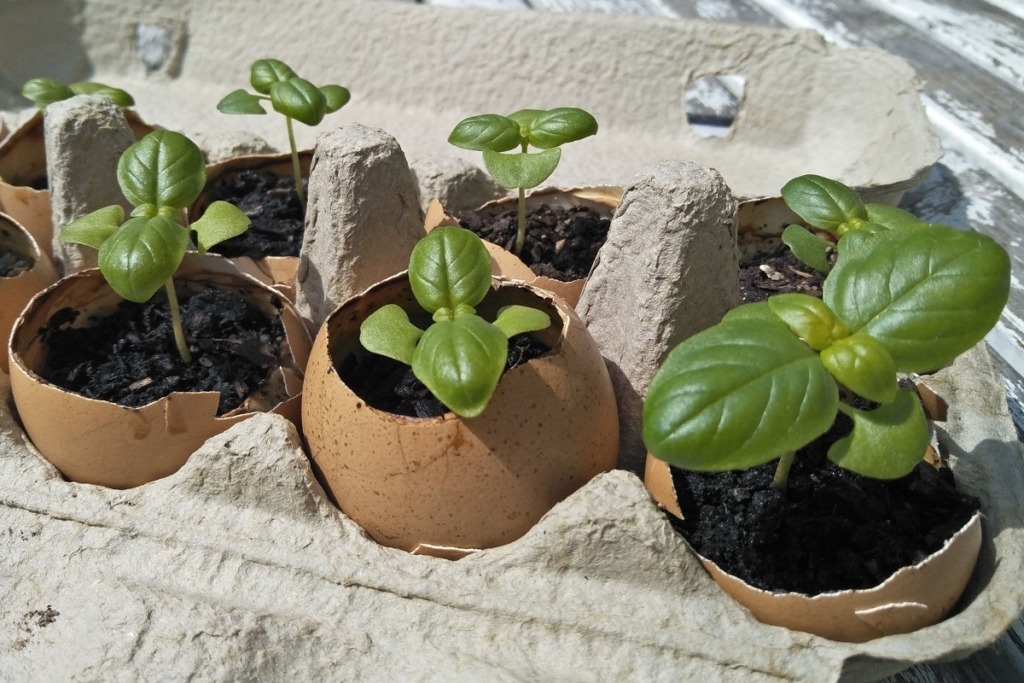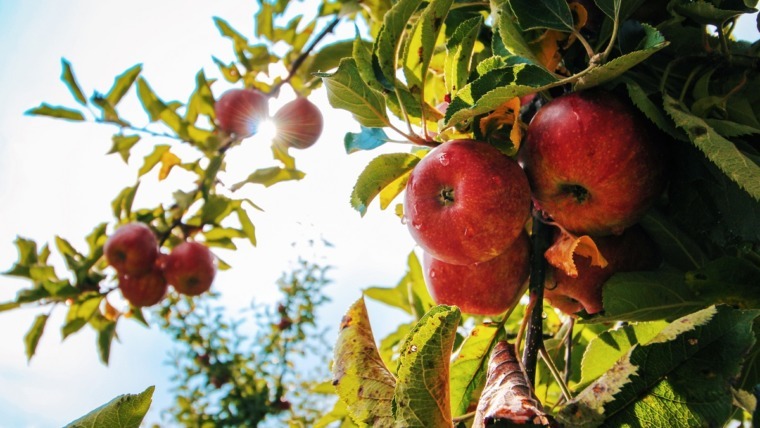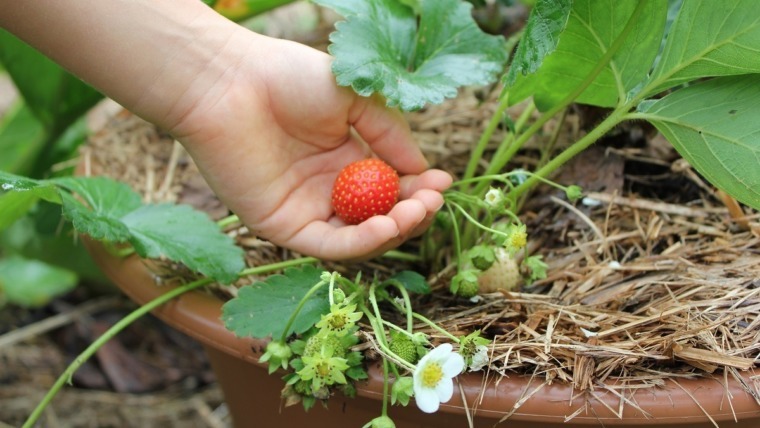
Written by Melanie Notaras of My School Adventure
I feel intense pleasure when looking at or being in my garden. I feel wealthy, and strong, and healthy and belonging to my world. When I lovingly admire my swathes of leafy kale, or pillars of green tomatoes growing like beanstalks into the sky, I’m happy that I can feed my family at least some organic food (we’re mainly vegetarian, and we could never afford to buy all organic from the supermarket). My kids – even the fussy one – loves to pluck a strawberry or bean and pop it into their mouths, and they know which plant is which (go fetch it kids, I’m busy cooking your dinner). I’m a pirate joyously digging for buried treasure when my fingers strike fresh potatoes in the earth. And with pots overflowing with self-seeding parsley, basil, thyme, rocket and rosemary, all our meals have a delicious luxuriousness that we don’t have to think about until two minutes before serving dinner.
I do this without almost any budget, yet I feel gloriously rich. I’m a self-confessed recycling addict, and much of it goes into growing my own food. The wealth is all around us, and you can grow it too whether you have a backyard or just a sunny windowsill.
Here Are Some Of My Tips For Creating Wealth In Your Garden!
- Search for pots (ceramic is better, I prefer not to have plastic leaching into my food), stakes, wire frames, compost bins and garden ornaments on Council clean up days.
- Make your own free fertiliser by recycling your food and garden scraps into a compost heap or bin, worm farm, bokashi bin or buried into your soil. Is your Council or local landscaper offering free woodchips? Get a bag and add it to your food scraps.
- Never let any organic material leave your garden! Every dried leaf, stick or branch that you put into your green garden bin could be mulch protecting your plants from the sun, or dug into your dirt for extra organic matter.
- Get free plants by striking cuttings (ask first – it’s a nice way to make friends) or swapping seed with friends or plant swap clubs. Save your own home grown seed for next year – it will usually germinate much faster than shop-bought seeds as it’s so fresh (especially lettuce and parsnip)!
- Make your own organic seedling pots by recycling your eggshells. Crack the eggshell about 2/3 of the way along, wash it and crumble the smaller third into the base of the larger eggshell. Cover with a small square of kitchen paper to create a water reservoir and scoop a couple of teaspoons of soil on top. When you’re ready to plant, crack the base of the egg and put the whole thing straight into the soil - reducing transplant shock and helping to direct water to the roots.
- Have an old aquarium lying around? Convert it to a wicking bed! Place a pipe or tube in a corner and lay gravel in the bottom third of the aquarium. Cover with two layers of fly screen material to form a water reservoir, and the mesh stops roots getting through. Fill the rest of the aquarium with potting mix. Traditional wicking beds have an overflow hole at the gravel/dirt level so the soil doesn’t flood, but we can’t drill into glass so if you’re going to leave the aquarium outside, plant it with a water-loving plant such as mint. Or keep it under a roof, planting with above-ground crops such as silverbeet, strawberries, herbs or tomatoes and watering via the tube.
- Regrow used vegetables from old – cut off and bury potato or ginger shoots, plant sprouted whole onions, or soak cut-off carrot tops - they regrow leaves and eventually, new seed.
If You Only Have A Windowsill Or Kitchen Bench There’s Still The Thrill And Wealth Of:
- Growing your own microgreens - choose seeds from your food cupboard such as lentils, chickpeas, chia seeds, flaxseeds or raw sesame seeds, or you can buy microgreen seed mixes. Soak them in water for at least 12 hours then drain onto a sieve (I reuse the plastic sieves from the 1kig packets of ricotta cheese). Freshen them with water three times a day. The shoots will grow to full size within 3 – 5 days. They’re peppery and delicious on their own, in sandwiches or salads, and full of nutrition.
- Growing small container plants such as aloe vera, camomile, herbs or strawberries.
- Re-growing shallots – cut off the base with roots, soak for a day and plant into soil. You can keep cutting and regrowing these for months.
Bank your time and your creativity, and an abundance of garden wealth and health will follow. Be fruitful people!



